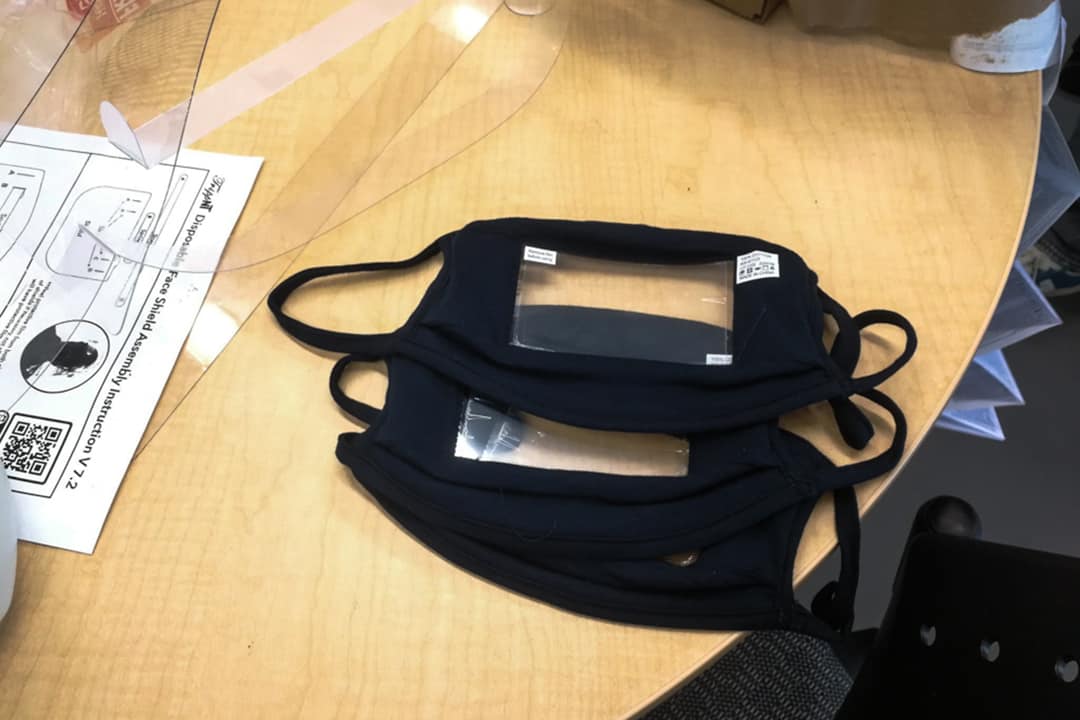As the COVID-19 pandemic has swept the country, the practice of wearing face masks has become increasingly widespread, with evidence showing that masks are among the most effective ways of curbing the spread of the virus.
However, students who are deaf and hard of hearing, who may rely on the use of American Sign Language (ASL) translation and lipreading in their daily lives, face unique challenges when navigating the university during the pandemic. Though U of T is working to offer accommodations for these students, including by offering transparent masks and closed captioning for lectures, these practices are still not widespread.
Experiences of Deaf students with online learning
In an email to The Varsity, Alex Lu, a PhD candidate in computer science, described his experiences as a Deaf student during the pandemic. Lu relies mostly on ASL interpretation for courses and lipreading during daily interactions.
ASL interpretation has been moved online along with most U of T courses, where students in need of translation can pin the interpreter on a Zoom call. According to a U of T spokesperson, students are increasingly asking for other services, such as closed captioning for online lectures and tutorials.
The accessibility office offers real-time captioning services for remote learning through third-party vendors. Robarts Library’s accessibility office is also working to create “post-production captioning support” for media materials given out by professors, which may include podcasts or YouTube videos.
U of T has also been working to provide non-medical masks with clear plastic panels “where needed” to students and instructors in courses with a Deaf student who may rely on lipreading for everyday communication. They work with those who may require these accommodations on an individual basis. The plastic panels allow people who rely on lipreading for communication to see someone’s lips while they are talking, even though they are still wearing a mask.
However, according to Lu, these accommodations are often not as clear cut as they may seem.
“A lot of remote video software is not designed for us, especially in larger groups. For example, Zoom videos will focus on whoever’s speaking orally, but there’s no similar mechanism for signers. Bandwidth issues affect us more – whereas audio might not be broken up, videos can stutter and cause us to miss parts of what’s being said,” wrote Lu.
In an email to The Varsity, Alexandra McLean, Vice-President Equity for the University of Toronto Students’ Union (UTSU), who is a deaf student with cochlear implants, criticized the university’s accessibility services for what she described as a “lack of communication” with students.
McLean’s main mode of communication is verbal, though she criticized the university for not providing transparent masks more widely. “In the one in-person [class] I had before classes were moved online, everyone wore non-transparent face masks, making it significantly [more] difficult to understand anyone in the room,” she wrote.
“For the Deaf/deaf and Hard of Hearing community, the inability to read lips and facial expressions further exacerbates threats to proper communication,” wrote McLean.
McLean’s primary accommodations include notetaking and closed captioning for online courses, though she added that Blackboard Collaborate, a popular medium for online courses, does not offer automated closed captioning directly through the service, and there is no standard for how these should be added. She noted that recording of online courses is also essential for accessibility.
“One of the main challenges is asking for these accommodations when they haven’t been standardized across all learning platforms,” she wrote. She added that the provision that students provide documentation of a disability in order to receive accommodations is a barrier for many.
She described courses during the pandemic as a “double-edged sword,” as most in-person classes did not provide clear face masks, and online courses further “inequities that continue to persist in the university” for students who require accommodations.
Deaf culture, day-to-day life
Lu wrote not only about the difficulties of navigating university and daily life during the pandemic, but also about how interaction within the Deaf community has fared.
Specifically, Lu discussed issues with signing over Zoom and through masks due to facial cues that are a part of ASL, explaining that many members of the Deaf community prefer to meet in person for these reasons.
Lu is part of a scientific committee at a Deaf academic conference, which was postponed rather than moved online this year to accommodate the cultural preferences within the Deaf community.
Lu identified “Zoom fatigue” as one area in which Deaf people may have an advantage. “We have more experience in paying attention to non-verbal cues, so while hearing people have to suddenly work harder to capture these cues in Zoom meetings, Deaf people have been doing this as a routine part of our lives daily already. So we’ve built up the stamina it takes to navigate an online video-chat world better,” wrote Lu.
Lu also discussed the difficulties of wearing masks in daily life. “While I book interpreters for academic meetings, and other important meetings like medical appointments, I generally don’t have an interpreter for day-to-day interactions, like at coffee shops, or talking to colleagues in the hallway,” wrote Lu.
He wrote that although he is often able to guess at what he is being asked in common social interactions, if they “go off-script,” he has few ways of navigating.
“Hearing people mostly don’t have strategies other than repeating themselves over and over again when they are not understood,” wrote Lu. He suggested some more effective ways for hearing people to navigate these situations, such as using gestures or writing things down, though he said that people are sometimes not understanding or patient when he requests these accommodations. “Transparent masks do help, however,” he added.


